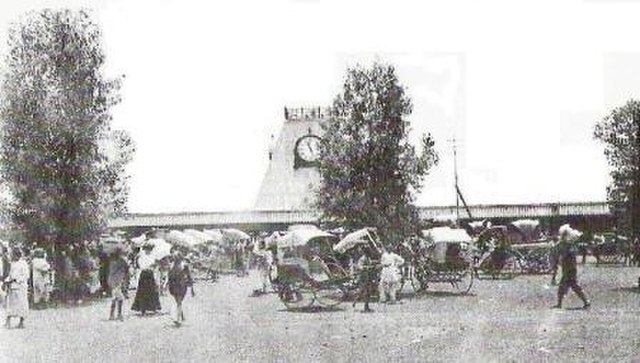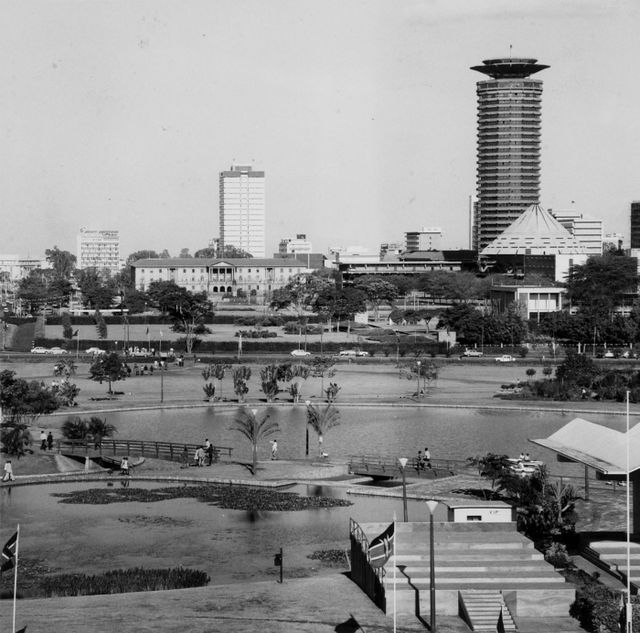Nairobi National Park is a national park in Kenya that was established in 1946 about 7 km (4.3 mi) south of Nairobi. It is fenced on three sides, whereas the open southern boundary allows migrating wildlife to move between the park and the adjacent Kitengela plains. Herbivores gather in the park during the dry season. Nairobi National Park is negatively affected by increasing human and livestock populations, changing land use and poaching of wildlife.
Despite its proximity to the city and its relative small size, it boasts a large and varied wildlife population, and is one of Kenya's most successful rhinoceros sanctuaries.
A lion in Nairobi National Park, December 2016
Typical landscape in Nairobi National Park
A Masai giraffe in Nairobi National Park.
A Rüppell's vulture in the park
Nairobi is the capital and largest city of Kenya. The name is derived from the Maasai phrase Enkare Nairobi, which translates to 'place of cool waters', a reference to the Nairobi River which flows through the city. The city proper had a population of 4,397,073 in the 2019 census. The Greater Nairobi Metropolitan Area has a population of about 7,000,000 people. The city is commonly referred to as The Green City in the Sun.
Clockwise from top: central business district; a giraffe walking in Nairobi National Park; Parliament of Kenya; Nairobi City Hall; and the Kenyatta International Convention Centre
Nairobi in 1899
Entrance to Nairobi railway station in 1899
Nairobi in 1973








